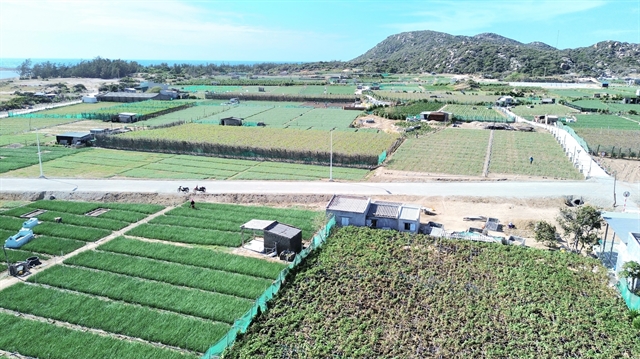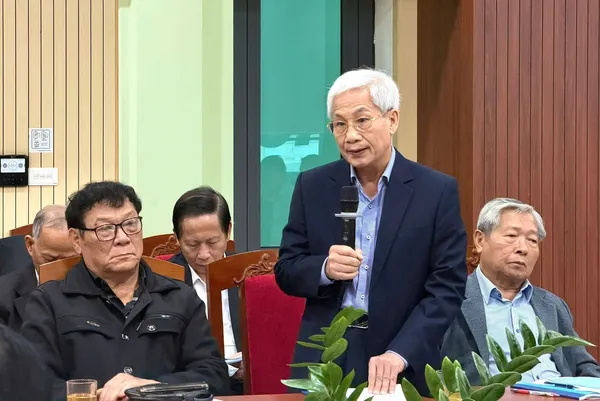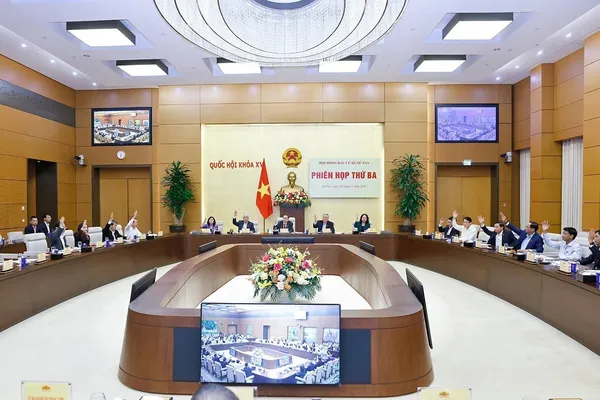 Environment
Environment

 |
| An agricultural production area in Thái An Village of Ninh Hải District, Ninh Thuận Province designated as the site for the Ninh Thuận 2 Nuclear Power Plant. — VNA/VNS Photo Nguyễn Thành |
HÀ NỘI — As an amendment to the Law on Atomic Energy undergoes discussion at the National Assembly’s ninth session, Vietnamese-origin experts with experience in major nuclear projects abroad have suggested transformative approaches to the country’s future power projects.
“It’s essential to change public perception of nuclear energy,” said Dương Thành Nam, a lead engineer of the EPR2 nuclear power project at the French utility company Électricité de France (EDF).
He stressed that mastering nuclear technology was not only a technical challenge, but also a matter of mindset and approach concerning the entire society.
The engineer told Vietnam News Agency (VNA) reporters in Paris: “People might associate ‘nuclear’ with destruction and devastation, but everything depends on how we think and what we choose.
“It’s important to explain that mastering nuclear technology serves the interests of humanity.”
With nearly a decade of experience in the field, Nam said that the high level of precision required in nuclear power projects could be both a challenge and an opportunity for Việt Nam to comprehensively upgrade its supporting industries.
Nuclear energy is more than just reactor technology, according to Nam. One of the most controversial issues is the management of radioactive waste. This is a challenge that can persist for thousands of years even after a nuclear plant halts operation.
Dr Vũ Minh Ngọc, the only Vietnamese to have won the PhD Prize in Geomaterials by the Alliance of Laboratories in Europe for Research and Technology (ALERT), said: “Radioactive waste management is the final step of the nuclear fuel cycle, aimed at protecting current and future generations.”
According to Ngọc, who is leading geomechanics and civil engineering projects at the French National Radioactive Waste Management Agency (ANDRA), the safest practice currently applied in developed countries is to store waste in suitable layers of geological formations, such as clay or granite.
Notably, although constructing underground geological storage facilities may cost tens of billions of euros, Việt Nam, as a newcomer in the field, could reduce research time and costs by identifying geological strata similar to what has been proven effective by other countries.
For Bùi Nguyễn Hoàng, a senior engineer with over 15 years of experience working on nuclear power plant projects across Europe and Asia, human capacity remains the top priority.
“Many engineers and experts are eager to return and contribute directly to project management, supervision and quality control throughout operations,” he said.
Hoàng noted that there were currently nearly 100 Vietnamese and Vietnamese-origin engineers and experts working in nuclear plant construction in Europe. This would be a high-quality human resource that could contribute to policy consultation, design verification and technical review for Việt Nam.
However, to attract this talent pool, Việt Nam needed to adopt special policies and foster a more professional working environment, he added.
Safety measures
With more than 20 years of experience in construction, Dr Lê Quốc Việt pointed out that after the Fukushima nuclear accident in 2011, safety regulations were significantly tightened, making design and project management much more complex.
Having worked on the Flamanville 3 EPR nuclear reactor in France since the groundbreaking until grid connection, Việt said this project was one of the ‘victims’ of these complex procedures.
The Flamanville 3 EPR nuclear reactor took 17 years to complete, with costs rising to EU€23.7 billion compared to the initial estimations of EU€3.3 billion.
“Building a nuclear power plant is already a complex task, but safe operation and management is even more difficult,” Việt noted.
Citing the Fukushima and Chernobyl disasters, he said these accidents showed that "despite technological advancements, human factors, operational procedures and emergency response capabilities are decisive to safety outcomes".
Lessons from these disasters are of particular concern to the Association of Civil, Mechanical and Materials Engineering (GCMM) of Vietnamese engineers in France.
With nearly 500 members of Vietnamese origin working or studying construction in France, about 50 of whom have extensive experience in the nuclear sector, GCMM has made several specific proposals for disaster preparedness.
“The Fukushima accident showed that we must comprehensively assess natural disaster risks, even those deemed unlikely,” said GCMM chair Dr Nguyễn Thường Anh.
Together with PhD candidate Phí Minh Nhật, he recommended that Việt Nam adopt disaster prevention measures such as building seawalls at least 12m high, setting plant foundations more than 20m above sea level, and designing structures that can withstand strong earthquakes.
Experts also stress leveraging digital technology and artificial intelligence. Smart sensor systems, big data analysis models for natural disaster forecasting and internal vibration sensors can enhance responsiveness and reduce risks.
More importantly, they note that investing in disaster prevention measures from the design stage not only ensures safety but also brings long-term economic benefits, as insurance costs could be reduced by 30-50 per cent if strict safety standards are followed.
Việt Nam stands at a pivotal moment in developing safe and effective nuclear power programmes whose success relies on more than the right technology.
They require comprehensive investment in human resources, building a strict safety culture and applying the most advanced design standards within a rigorous legal framework.
In this context, Vietnamese atomic experts abroad are invaluable bridges to help the country meet global standards in developing nuclear energy. — VNS




